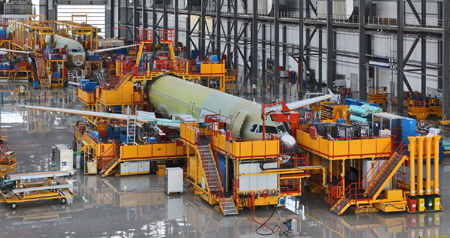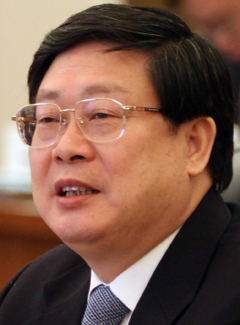Economy
Tianjin Binhai New Area to propel development
By Wang Yu and Rong Xiaozheng (China Daily)
Updated: 2011-01-17 16:24
 |
Large Medium Small |
|
 |
|
A320 Family aircraft are put together at the Airbus Tianjin Final Assembly Line in the Tianjin Binhai New Area. [Photo / China Daily] |
"To better hone the economic structure and transform the development pattern, we must seek growth by cultivating three internationally leading hubs in the Tianjin Binhai New Area - namely, in the aerospace and aviation, the petrochemical and the alternative energy industries," TBNA head Zong Guoying told China Daily.
Five other bases, including those for equipment manufacturing, electronics and information industries, will be established in the TBNA. These clusters will be nationally leading in terms of scale and quality.
Tianjin Party Secretary Zhang Gaoli praised high-quality, large-scale industrial projects' role in the municipality's overall development.
Such projects have long been crucial to enabling Tianjin to guard against risks and ensure sustainable development, Zhang said.
The TBNA's GDP is expected to reach 1 trillion yuan by 2015. The new area already contributes more than half of Tianjin's GDP.
The municipality's year-on-year GDP growth is expected to be 12 percent on average from 2011 to 2015, Tianjin Mayor Huang Xingguo told a plenary session of the Tianjin People's Congress on Sunday.
The TBNA's average year-on-year GDP growth rate is expected to hit 20 percent during the next five years, Zong said.
|
 |
|
Huang Xingguo is the mayor of Tianjin. |
The 12-percent annual GDP growth rate is feasible given the municipality's achievements during the 11th Five-year Plan (2006-2010) period and the forecast of its development environment in the next five years, Huang said. Huang added the municipality will strive to reach the goal even sooner.
But transforming the development pattern and adjusting the economic structure will create many thorny issues that generate uncertainties.
| ||||
The quality and modernization of manufacturing in the TBNA have made it possible to set the comparatively higher 20-percent annual GDP growth goal, Zong said.
Tianjin's year-on-year GDP growth was 16 percent last year, while the TBNA's was 25 percent, government figures showed.
The TBNA last year contributed about 500 billion yuan of Tianjin's 900 billion-yuan GDP.
As a pilot development area of North China, the TBNA has often been compared with its southern counterpart, the Shanghai Pudong New Area.
But the younger TBNA in the first half of last year outpaced Pudong in GDP for the first time.
TBNA's GDP surpassed Pudong's 222.6 billion yuan by 500 million yuan during the period, National Development and Reform Commission figures showed. The gap grew to a staggering 20 billion yuan in the first three quarters.
| 分享按钮 |



